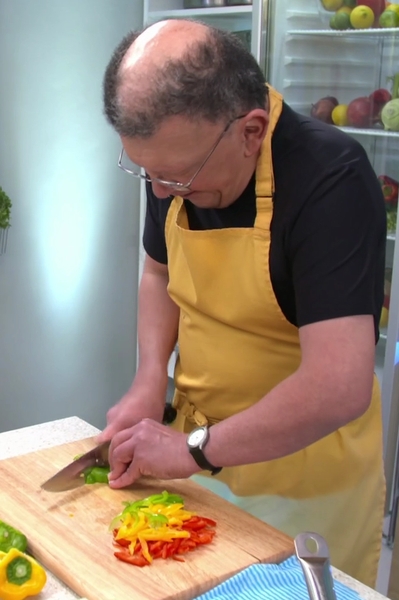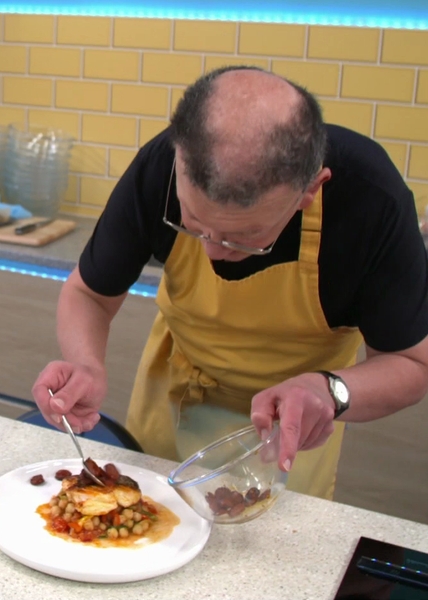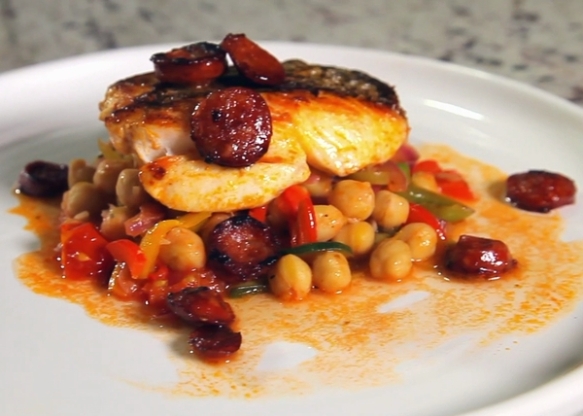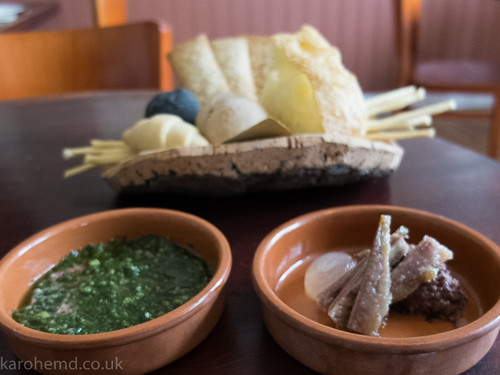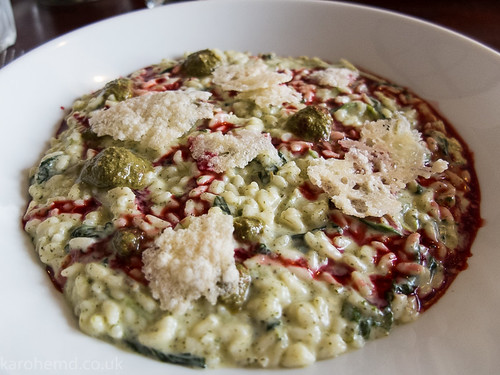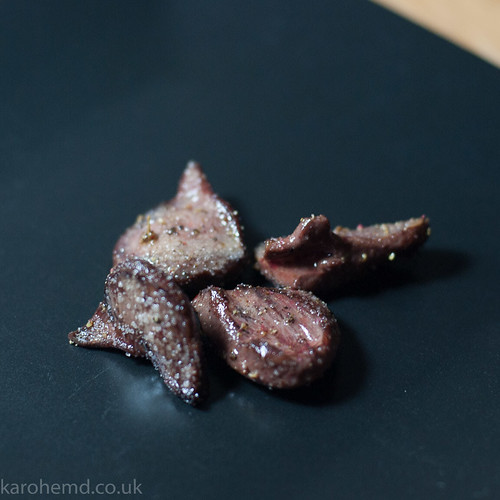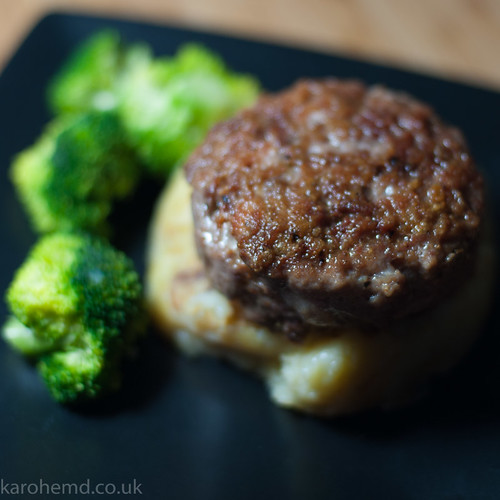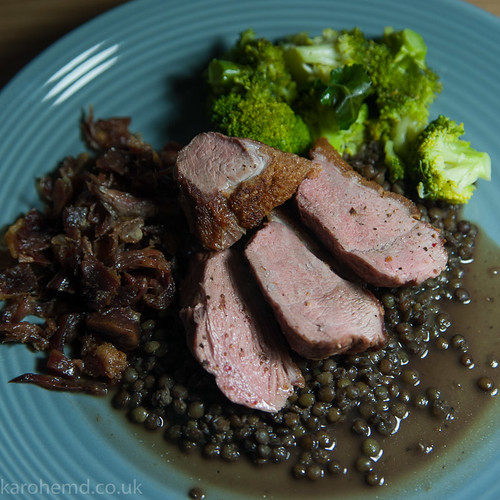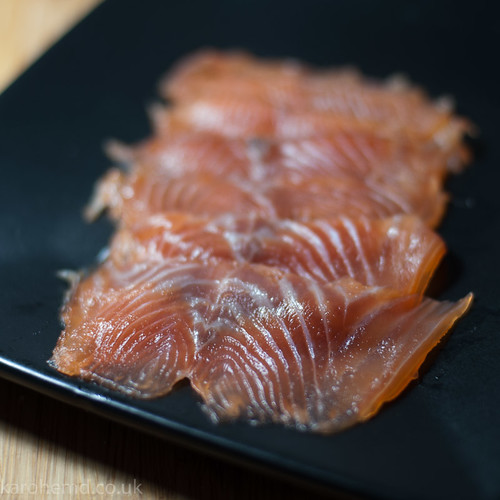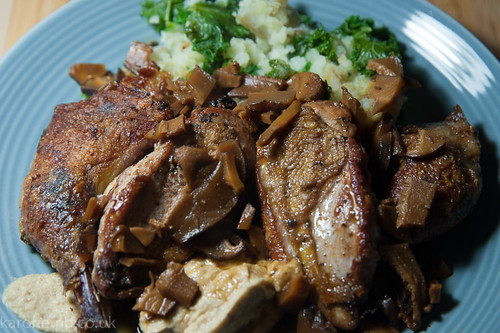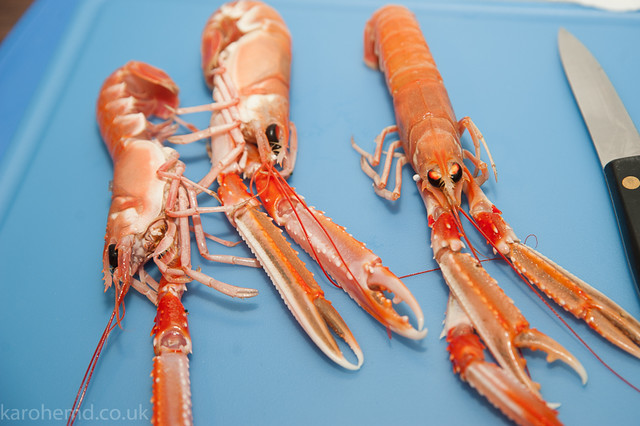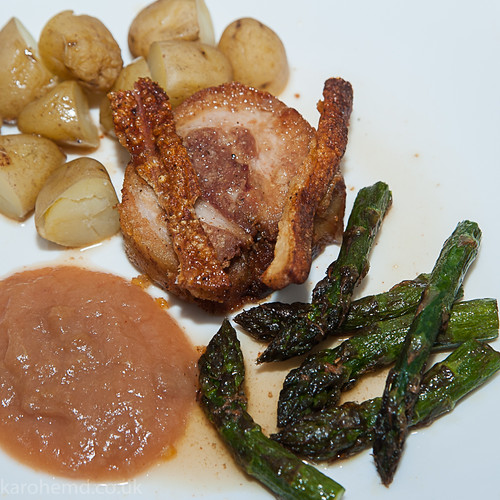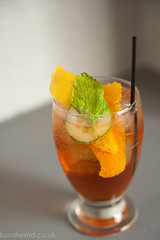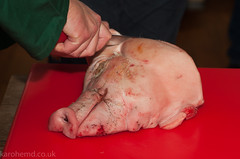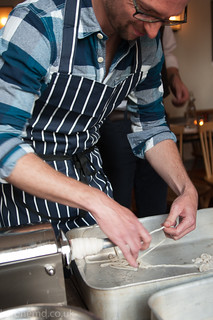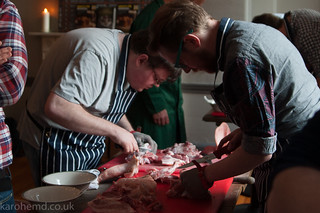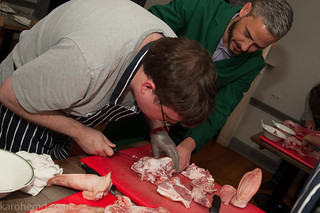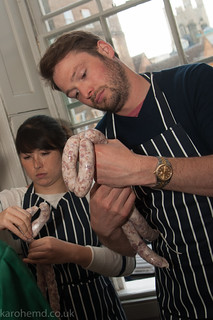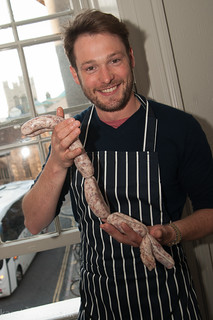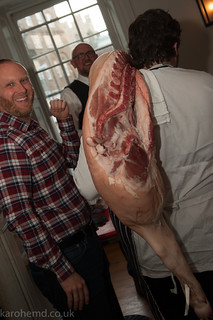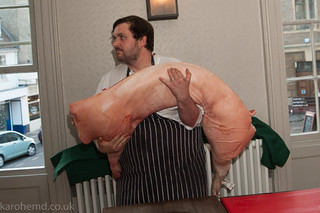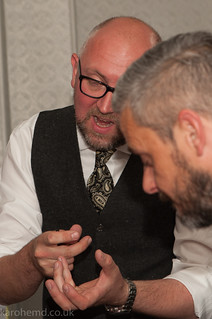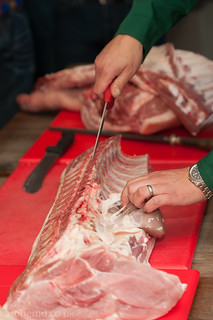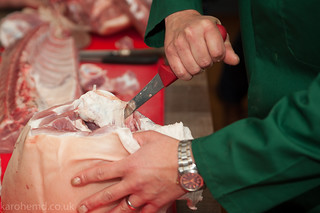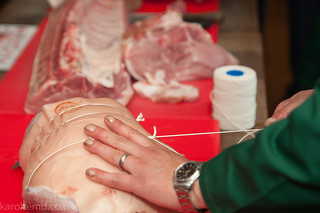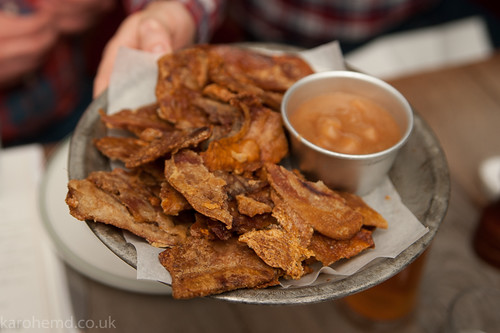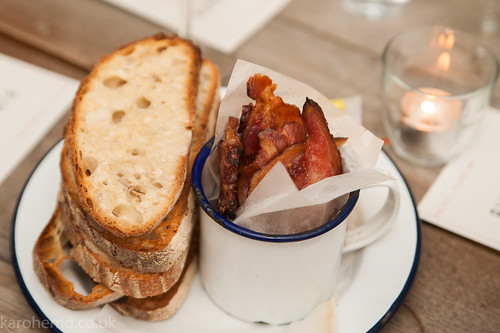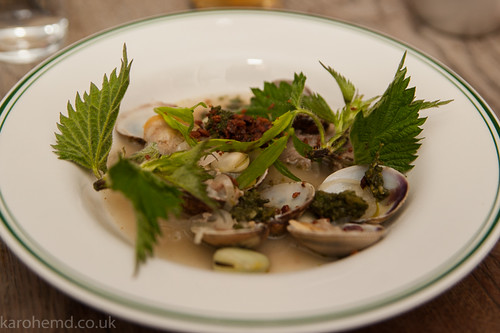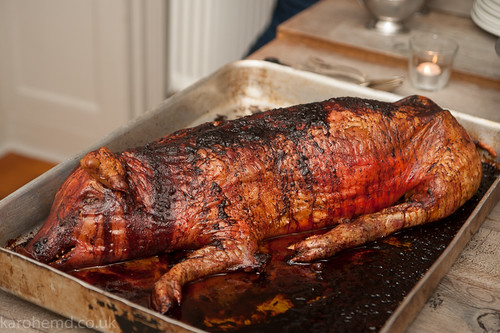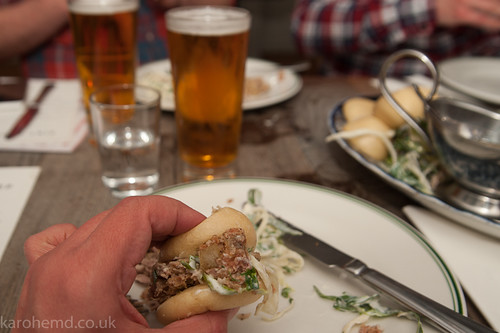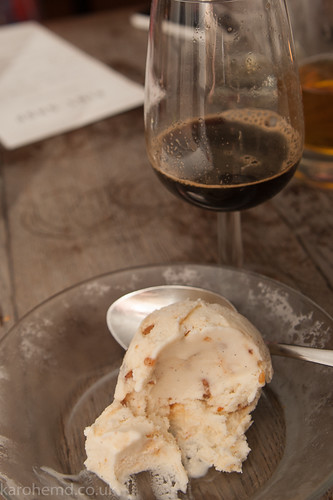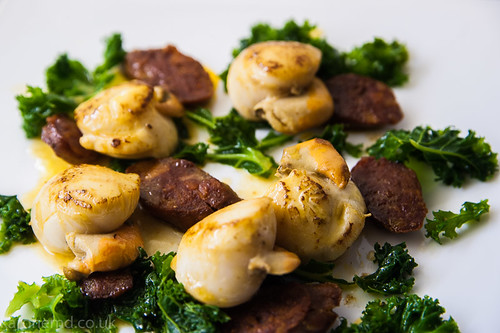When I was recovering from accident last summer, I watched a lot of daytime TV, among which was a cookery competition called Yes Chef. Each day a number of contestants cooked their signature dish for a professional chef who then set two further challenges, a technical one (which varied from boning a chicken or filleting a fish to making hollandaise) and an invention test: a collection of ingredients for one of the chef’s signature dishes from which the contestants had to create their own dish. Afterwards the chef would cook the dish they had in mind. The winner of the day would then compete with his chef against the other winners/chefs of that week and face Pierre Koffmann in a series of challenges. As the skills (and time) required were within what I considered I should be able to do, I kept an eye on the BBC’s listings for a call for contestants for a new series. This indeed happened, I applied and was chosen to take part.
Here is the episode. Note: This will disappear after it’s taken off iplayer but should stay for about three weeks. Sadly, it is not available outside of the UK as the BBC region-blocks its broadcasts.
The filming took place in early February this year and here is what happened (spoilers, obvs.):
I was picked up from my hotel just before 8 in the morning. The venue was the Cheshire Cookery School which is attached to a kitchen showroom.
I was introduced to the producer, Aaron, and the other contestants for the day, Elisa and Danny who I got on with really well from the start. We all took this as a fun thing to do and we all supported each other.
Then the technical crew set up and our “idents” were filmed, short pieces to the camera introducing ourselves, and talking about our cooking and what we expected of the show (these were somewhat cut in the actual broadcast). For this, each of us was in a different showroom kitchen as the backdrop (so not our actual home kitchens!).
We also were told that the professional chef would be Theo Randall, which made Danny a little bit nervous because he was cooking ravioli from scratch.
Next we were shown into the kitchen we would actually cook in, which I assume is the teaching kitchen. Each at our own workstation with two induction hobs and an oven. We checked our ingredients and equipment while some set pieces were shot.
After that we were introduced to Theo Randall and the group introduction with Sheree Murphy was shot, after which we filed to our workstations. Time was called and cameras started rolling for earnest. We actually only had 45 minutes without interruption.
This was the bit I had been a bit apprehensive about because I generally don’t fancy people looking over my shoulder or watching me when I cook but it was all fine. I just concentrated on the current task, even when they interviewed me while I was cooking. I thought that Theo genuinely liked the idea of my dish (pan-fried fillet of hake with chorizo, mediterranean vegetables and chickpeas).
I’d set my timer for half an hour because I thought the fish would take about 10 minutes which then would give me 5 minutes to finish up and plate but it cooked a little quicker than I thought so I was ready ahead of time. Despite that, I almost screwed up and forgot to add the crispy chorizo at the end but noticed just in time (phew).
Elisa finished her amazing looking dish (hake with a white crabmeat and breadcrumb crust, fennel and brown crabmeat croquetas) on time as well but Danny struggled a little as his pasta water had stopped boiling. The hobs weren’t great and seemed to have either really high or off as settings despite there being a sliding scale from 0 to 14 (who does that? When I started the chorizo off on 6, nothing was happening until a member of the crew suggested to turn it up high).
Another aspect that turned out better than anticipated was that it wasn’t hot. All the lights are LED these days so that was rather pleasant. I didn’t even sweat.
Then we waited in the “holding area” while production shots were made of our dishes and the tasting room was prepared.
We were called one by one to the tasting table and Theo gave us our comments. He complimented the cooking of the fish (came out just as I wanted, moist and flaking) but criticised that the vegetables were too crunchy (this is where I had to disagree because mushy veg aren’t nice). He said it was simple but showed my understanding of flavours and seasoning. I don’t think I could have asked for a better critique.
Here is a screenshot of the finished dish:
I then took my dish to another table with the other contestants who then tasted as well and we all tucked in. Both agreed that vegetables were spot on. So ner, Theo! ;P After this a few pickups were shot of the other contestants looking at me saying Well Done and me Thank you etc. (these felt really awkward and staged and thankfully didn’t make it into the broadcast episode).
This process was repeated for the other two contestants. Elisa’s baked hake was absolutely fantastic, Perfectly cooked, soft fish with a crunchy coating and extra texture from the fennel and samphire and those croquetas were just amazing. Danny’s ravioli could have used another minute in the water but they had held together and the flavours in the filling were excellent. I had some serious competition on my hands.
Oddly, the order in which the dishes had been tasted was reversed in broadcast.
After another setup break (for us), it was time for the technical challenge. Theo Randall demonstrated Linguini Carbonara with Asparagus (no guanciale). This seemed simple enough but I was a little apprehensive because for some reason I had never made Carbonara before. It went reasonably well, though, despite another technical mishap when my hob misbehaved again after I had turned it down. I was happy with how it tasted and the cooking of both the pasta and the asparagus but I think it should have been a little looser.
Another setup change, back to the tasting room where we presented our dishes at the same time and they were judged directly against each other. Theo said it was really hard to find actual fault in any of them but mentioned that there were subtle differences in seasoning and flavour balance (we’d been given no measurements, just used our own judgement).
After the deliberation break, we were called back into the kitchen for the first elimination. It was me but I consider it a perfectly fair assessment. My signature dish was the most simple and I think the others’ carbonaras were better, too, especially Elisa’s.
Unfortunately I wasn’t allowed to stay and watch the third stage. Too hectic, apparently.
Having now seen the episode I think I could have done a decent job of the final challenge and would most likely have pan-fried the sea bass as well. Probably not enough to win against Elisa, though. That aside, it was a good thing I didn’t get through because I came down with a nasty cold the next day so that would have been nasty.
I really enjoyed the day. It was a lot less stressful than I had anticipated not least because everyone from the director, Sheree Murphy, Theo Randall, to the engineers and camera people and assistants were so nice. The atmosphere was professional but relaxed at the same time, a really good environment to do this in.
Finally, a few screenshots for posterity:
